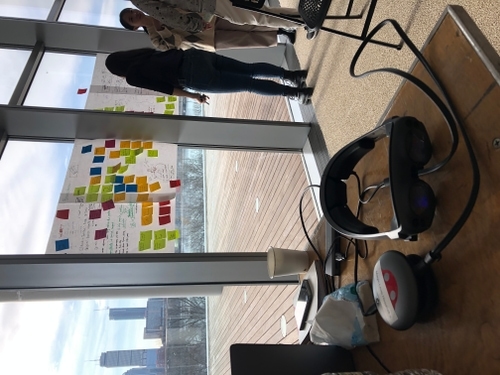Project Brief
⚡️ The primary design challenge was to make the experience feel immersive and seamless while navigating the limited field of view as well as the existing objects in the room.
Leveraging Magic Leap's hand tracking abilities enabled the developers to use these as programatic inputs. This offers a new and less mechanical way to interact with computers or characters.
Given the capabilities of the technology we created a use case enabling people to interact with AR aliens via hand gestures. This reflects human nature in our ability to interact with people who may not speak our language when you make an effort to connect.

Design
I designed the human/alien interaction as well as how the experience navigates the limited field of view that often takes users out of a mixed reality experience.
AR/VR and mixed reality must prioritize the physical comfort of the user. So the alien had to be close enough to avoid eye strain, but also far away enough to be completely visible to the user upon placement.
I worked with the animator and developer to create visual cues to help users navigate this novel experience. These included instructions, at the beginning as well as positive and negative reactions, sounds and haptics triggered by the character to encourage user participation and understanding.
The Magic Leap also has a remote/wand. We decided the design the experience without the use of the wand so that the user would be able to use both hands to communicate with the alien. In order to proceed through the stages of the introduction and instructional period, we had to use hand poses as cues.
Challenges
As a UX designer, I led the team to make decisions that would not only be intuitive to the user, but also physically comfortable after an extended period of use.